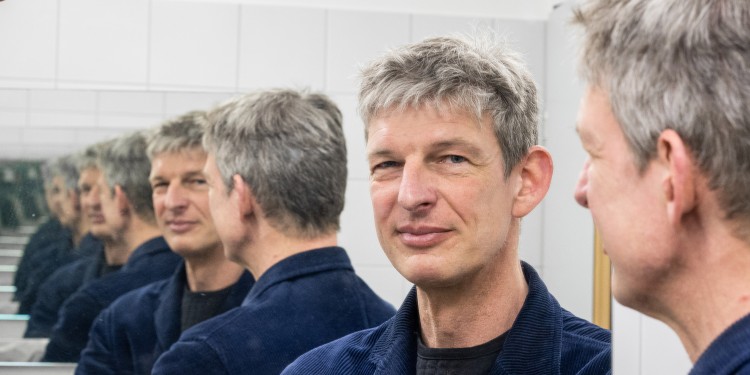
Researching with infinite patience
Once, in 2012, they thought they had reached their goal: Prof. Ralf Schindler and Prof. David Asperó presented to their community of fellow mathematicians a proof designed to unite two hitherto competing assumptions in set theory. Shortly afterwards the pair of researchers had to back-pedal after a colleague had discovered an error in their presentation. “As a mathematician you definitely need high frustration tolerance,” says Schindler, a professor at the Institute of Mathematical Logic and Foundational Research at the University of Münster.
But staying on the ball – despite setbacks – can pay off: a few years later, while driving on holiday in Italy, David Asperó suddenly had a brainwave showing how their proof might work after all. Together the two mathematicians worked on their approach, which they finally published in the “Annals of Mathematics” journal in May 2021. Mathematicians the world over celebrated the proof as a milestone in research in the field of infinities – one of the theoretical foundations of mathematics. Previously, experts had assumed that you had to decide between the two assumptions (known in mathematics as axioms). The new proof, however, demonstrates that the one follows from the other. This will have far-reaching consequences for other hypotheses in set theory.
“This proof is certainly one of the highlights in my career,” says Schindler now, a year later. What both amazed and delighted him was the fact that popular science media such as the “Quanta Magazine” and the “Spektrum der Wissenschaft” picked up on the issue in articles and podcasts and asked to interview him and Asperó.
Schindler’s fascination for mathematics began when, at the age of 14, he discovered a book on infinitesimal calculus in the library of his hometown of Erlangen. “I wanted to understand what the integral symbol meant.” One consequence of his curiosity being thus aroused was that, at 18, he won the German national mathematics competition. After completing his civilian service he studied logic and the philosophy of science in Munich. For his PhD, however, he turned once again to mathematics and became a doctoral student at the University of Bonn. “I’m really a lateral entrant,” he says, laughing.
Anyone wanting to set out on a career in the academic world needs to be willing to change locations – and that was clear to Schindler from the outset. After stays in Berkeley and Vienna, he moved to Münster in 2003. “It was a very formative time for me,” he says. “As a postdoc in Berkeley I worked with John Steel, who is a leading expert in the field of set theory and who equipped me with the right skills and tools. In Vienna we junior researchers had intense discussions, for hours on end, from which we all benefited enormously.” It was in Vienna that he met David Asperó, who is today a professor at the University of East Anglia. It was the beginning of a long and fruitful collaboration.
Exchanging ideas across national boundaries is, for Ralf Schindler, an important aspect of his job. He repeatedly spends several months at a time undertaking research in other countries, e.g. in the USA, Catalonia, Sweden or Singapore. Especially in the field of inner model theory, his main field of research, he describes the worldwide community of mathematicians as being “like a family and very cooperative”.
Schindler is glad at having the opportunity at Münster to expand his team – also with the support of the Cluster of Excellence Mathematics Münster, which has been receiving funding since 2019. “Nowadays we’re seen in Europe as a hotspot for inner model theory,” he says. “That makes it easier to attract promising junior researchers.”
How does anyone manage to keep both feet on the ground when they are dealing with abstract, highly complex theories day in, day out? “My friends, and especially my family, take care of that,” he says. The family includes three children – his eldest daughter is 33, and the youngest is ten – and a grandson. A new passion he acquired last year is motorcycling. This means it’s quite possible that sometime soon he’ll have a brainwave concerning some unsolved mathematical problem while riding around the Münsterland on his motorbike …
Author: Victoria Liesche
This article first appeared in the University newspaper "wissen|leben”, No. 3., 4 May 2022.
